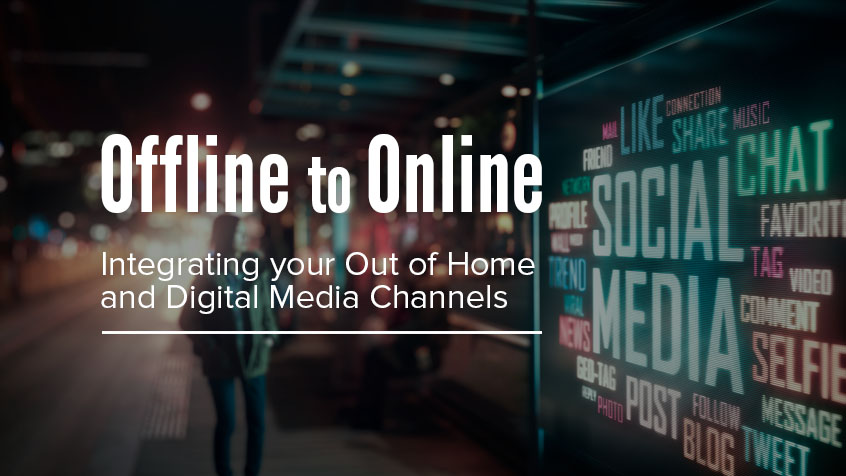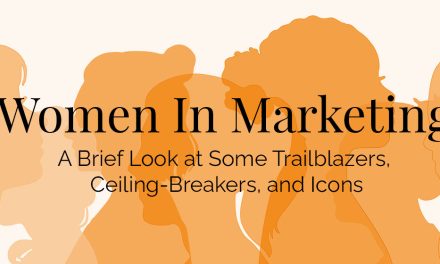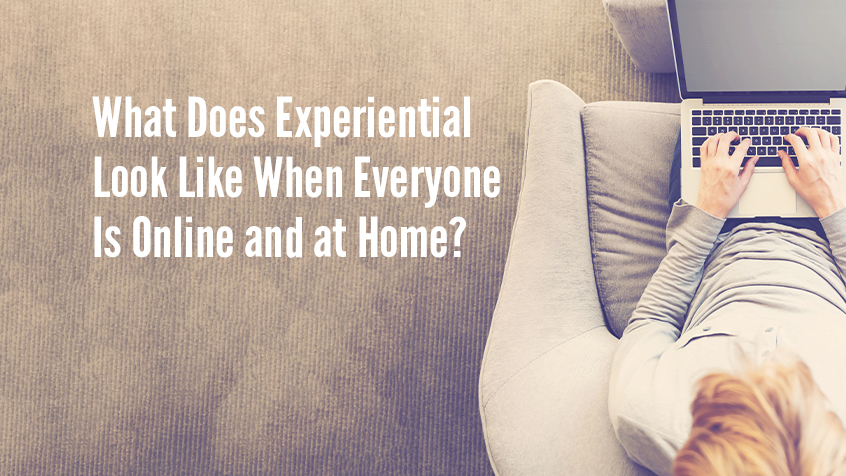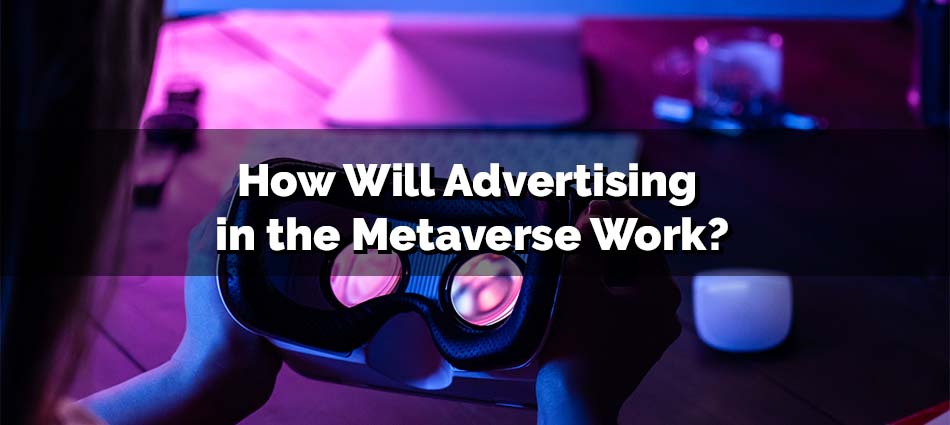A few years ago, most media buyers probably would have said that digital media = the future and Out of Home media = the past. Over the last couple of years, however, an increasing number of studies is showing that the two advertising channels are more aligned than we might have guessed.
In 2014, Rashid Tobaccowala, Chief Strategist for Publicis Groupe said, “Where you are is as important as who you are.” We are beginning to see the inherent truth of this played out across the media landscape. An individual’s online behavioral footprint is becoming an ersatz analog for the real person. Now, with new OOH planning data coming online, that digital footprint can be translated into the real world.
Before we proceed, keep these key digital and mobile use stats in mind:
- People spend 70% of their waking hours outside the home (OAAA, 2015)
- 68% of mobile use is done “on the go” (Criteo Mobile Report, 2014)
- 71% of all digital minutes are on mobile (Entrepreneur, 2018)
I will be the first person to admit that I’m not great at math (you can ask anyone in our accounting department) but I do know that adds up to a large amount of digital media being consumed on mobile devices while the user is outside the home. This begs the question: Is mobile (and by extension, almost any digital media) really an Out of Home format?
Combining Digital and Out of Home media can make the planning of each more efficient.
Advertisers can create an entirely new way of constructing their audience by combining digital behavior with physical location. The resulting model synthesizes both of these critical aspects in a paradigm-shifting new way.
Advertisers that have access to first party digital data – via apps, ecommerce, etc. – have in their hands a goldmine of information about their consumers. This has been true ever since the first ads went live online almost 25 years ago. With the influx of mobile geolocation data, behavioral information can now be married to real world location data to create an even more precise and informative audience model.
That said, even if advertisers don’t have access to first party mobile data, they can still take advantage of this new type of targeting. New tools, like Geopath’s MORE platform, are continuing to make OOH measurement more accurate. They allow media planners to build OOH media plans that rely on the same types of digital behavioral information, transformed into real world locations. By using this information, OOH plans will be more accurately targeted to the advertiser’s audience than ever before.
Then, by geofencing the OOH media, advertisers can create digital audiences from consumers who have been exposed to it. Integration of the two channels will help each create more precise target audiences. That means less wasted impressions (and money) for the advertiser.
Combining Digital and Out of Home media can make each channel more effective.
Advertisers can increase the effectiveness of Out of Home and Digital media channels by integrating both. The simple act of geotargeting your digital media will greatly improve its effectiveness. Marketers are recognizing this, and there is a significant trend toward geotargeting digital media.
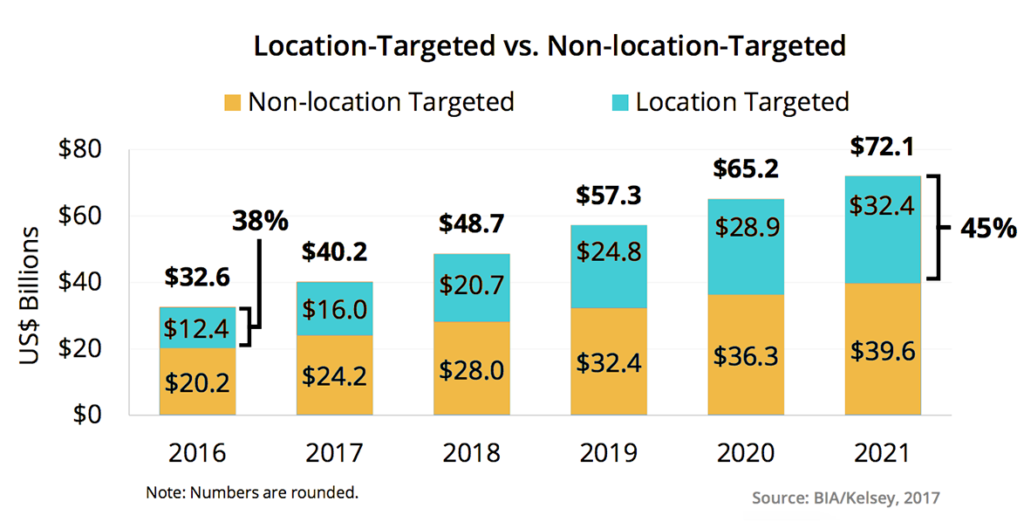
Take Whole Foods, for example, and what they did to improve post-click conversion rate for their mobile advertising. They used geofencing and geoconquesting to deliver highly targeted ads and special offers. They were able to improve their conversion rate to 4.69% – over three times the national average. In another study, a QSR brand that used location based digital “generated an average click-through rate of 1.21 percent compared to the .61 percent for QSR campaigns that did not leverage location.”
Add to this, consumers are 48% more likely to click on a mobile ad if they have already been exposed to the brand on Out of Home. This means by integrating your digital with geofenced OOH you can increase its effectiveness by almost 50%. This gives advertisers better ROI on their digital investment, and it means that their OOH dollars are working harder and providing value beyond their own impressions. An example of this was the 2017 campaign for European energy company E.On. They used “geofenced OOH sites and then later served audio ads via the DAX platform to those consumers it had identified as having seen the poster: brand consideration increased 26% among these consumers, while likelihood to recommend climbed 31%.”
Combining Digital and Out of Home media can help provide contextual relevance at scale.
The importance of contextual relevance is becoming more apparent. Consumers now expect ads to be customized to them – to their needs and preferences. A recent study showed that consumers are “80% more likely to do business with a company if it offers personalized experiences.”
Digital Out of Home has been offering contextual relevance for OOH media for several years now. It started by incorporating fairly simple elements, like dayparting, weather, traffic, etc. As the infrastructure and capabilities of DOOH channels continues to improve, so will its ability to provide context. Technology is becoming available that will allow advertisers to deliver DOOH creative based on the real-time assessment of the audience in proximity to the display by looking at the mobile footprint of that audience.
The ability to build a one-on-one relationship with customers, and deliver them something of value, relies on being able to identify them. Providing value and offers that make sense for the consumer helps to build trust and deepen engagement with the brand. Combining OOH and digital media provides advertisers more integrated points of reference to help build the customer identity.
We all remember the connect-the-dots pictures we used to do in coloring books when we were kids (for those of us old enough to remember coloring books). The more points there were in the outline, the more detailed the resulting picture. The same is true when building an audience profile; if we can add more points we get a clearer picture. When we integrate Digital and Out of Home we are adding more than just two points. The resulting audience profiles allow for easier, more specific contextual relevance for the consumer.
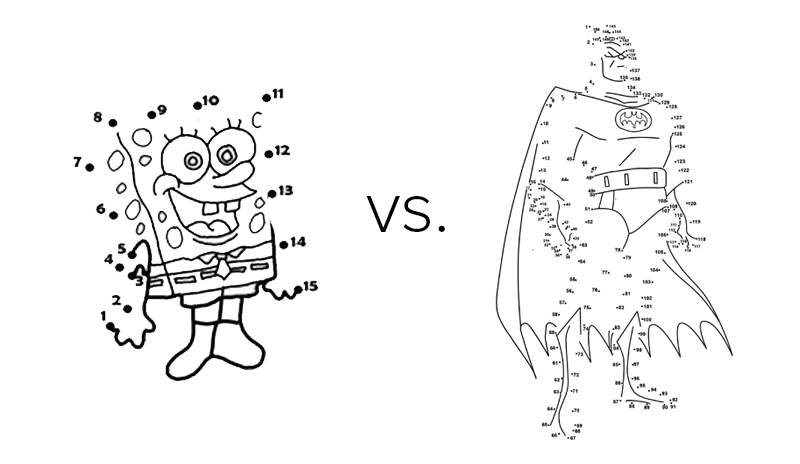
Which consumer profile would you rather have in your marketing profile?
Combining Digital and Out of Home media has proven to be successful.
Proof of the success of integrating digital and Out of Home can be seen by who is using it. Mauricio Sabogal, Global CEO at Kinetic, said it best: “What is interesting is, who are some of the biggest advertisers in out of home? Apple, Google, Facebook, Amazon. It might seem kind of weird, because their media assets such that, well, why are they advertising out-of-home? That’s a good question, and the answer is, because they need to be direct, and really they’re getting [incredibly useful] traffic data through interactive [OOH.]” You may be surprised at some of the other companies that top the OOH spend list.
Everyone (advertising agencies in particular) loves a good circular process chart. They’re usually built on some variation of we learn, we plan, we create, we deploy, we measure, and then learn again. The point being to convey the concept of the constant feedback loop that helps them optimize their efforts. We’ve all seen them, and we usually gloss over them as an obligatory nod to the need for analysis and adaptation that is necessary in any endeavor.
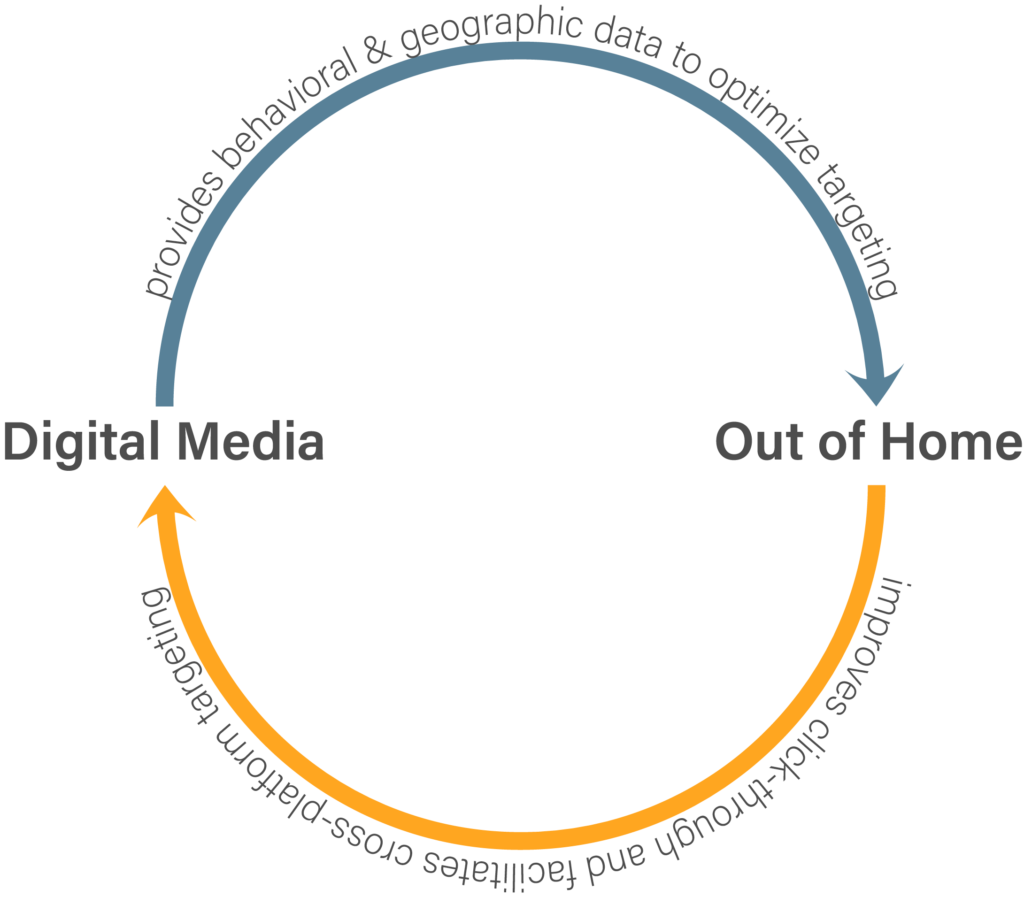
In the case of OOH and digital media, the feedback loop is very real and very simple. Mobile data helps improve OOH planning, and integrated OOH media helps drive online activation. This leads to better planning, thus continuing the cycle. OOH can now be planned to target behavioral audiences in the same way that digital media has been for years. This is bringing the two media channels closer together.
As the data and infrastructure of OOH and Digital become more aligned, it is imperative that media planners begin to look at them as combined and complimentary, rather than separate and distinct. To ignore the ability of these two channels to improve each other’s performance is to waste an incredible opportunity. Integrating Out of Home and Digital media really is a case of 1+1=3.
Our team of Out of Home and Digital media integration experts can help you develop a strategy custom fit to your brand. Complete the form below and find out how!

